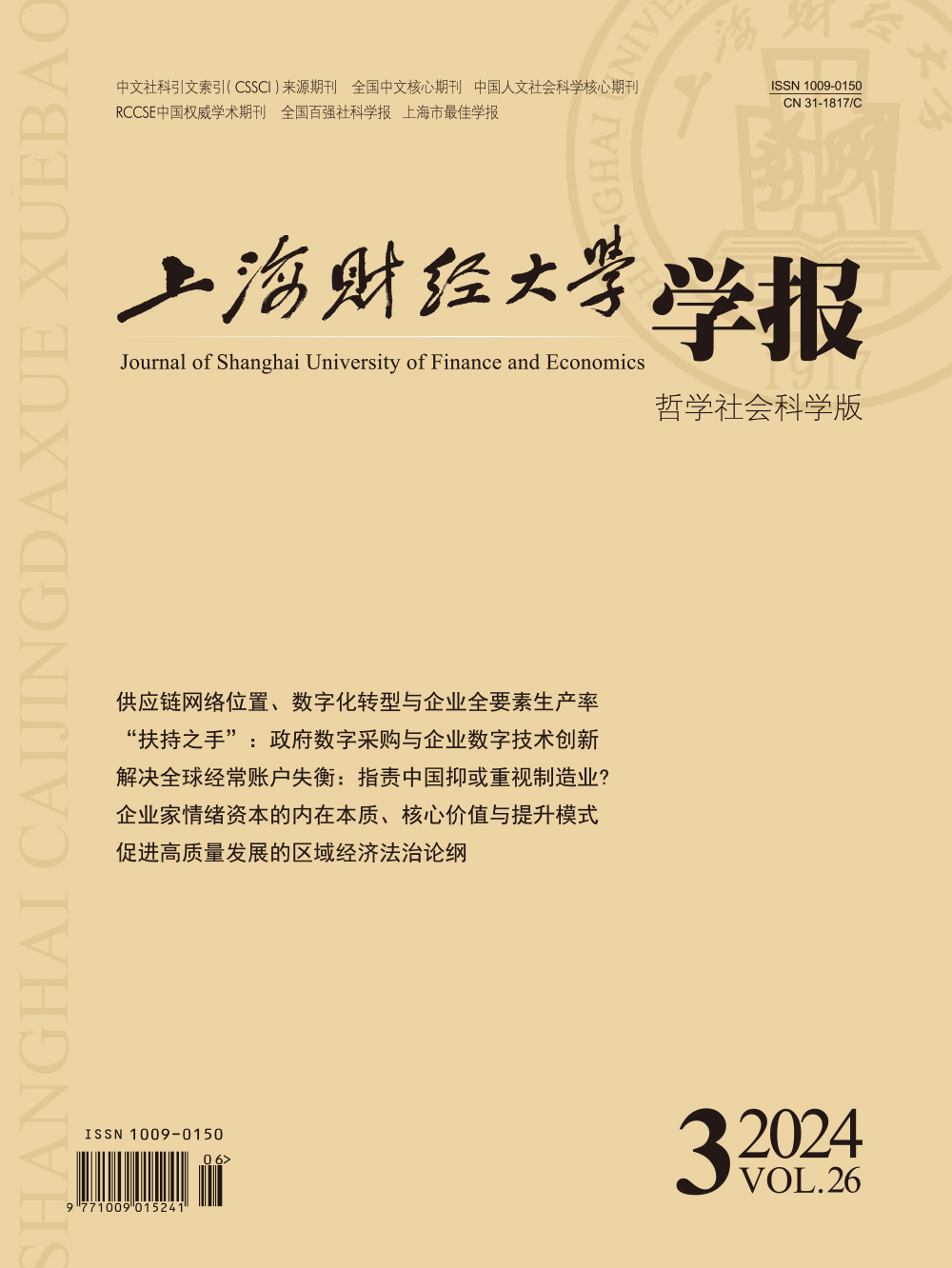在数字经济快速发展及国内价值链面临“断链”“卡链”风险的双重背景下,数字技术如何赋能中国价值链稳定性值得探讨。文章在构建嵌入式投入产出表的基础上分别从生产要素投入、增加值波动视角构建指标体系,测算省份—行业层面的数字技术、价值链稳定性水平,并实证检验了数字技术对价值链稳定性的影响及机制。研究发现:数字技术可显著赋能价值链稳定性,主要通过提升生产效率、中间品供应多元化两条途径实现;中西部省份数字技术更能提升价值链稳定性,在制造业领域数字技术更能促进价值链稳定性;投入省外的数字技术及来自服务业的数字技术对价值链稳定性的提升作用更强。研究结论对于统筹经济发展与安全,加快构建新发展格局,推动经济高质量稳步发展具有重要的现实意义。
数字技术如何提升价值链稳定性——兼论不同投入来源数字技术的影响
摘要
参考文献
27 Aghion P, Bacchetta P, Ranciere R, et al. Exchange rate volatility and productivity growth: The role of financial development[J]. Journal of Monetary Economics,2009,56(4):494–513. DOI:10.1016/j.jmoneco.2009.03.015
28 Antràs P. Conceptual aspects of global value chains[J]. The World Bank Economic Review,2020,34(3):551–574. DOI:10.1093/wber/lhaa006
29 Artuc E, Bastos P, Rijkers B. Robots, tasks and trade[R]. Policy Research Working Paper No. 8674, 2018.
30 Baldwin R, Freeman R, Theodorakopoulos A. Horses for courses: Measuring foreign supply chain exposure[R]. NBER Working Paper No. 30525, 2022.
31 Baldwin R, Freeman R, Theodorakopoulos A. Hidden exposure: Measuring US supply chain reliance[R]. NBER Working Paper No. 31820, 2023.
32 Deichmann U, Goyal A, Mishra D. Will digital technologies transform agriculture in developing countries?[J]. Agricultural Economics,2016,47(S1):21–33. DOI:10.1111/agec.12300
33 Gnangnon S K, Iyer H. Does bridging the internet access divide contribute to enhancing countries’ integration into the global trade in services markets?[J]. Telecommunications Policy,2018,42(1):61–77. DOI:10.1016/j.telpol.2017.08.004
34 Ivanov D. Viable supply chain model: Integrating agility, resilience and sustainability perspectives-lessons from and thinking beyond the COVID-19 pandemic[J]. Annals of Operations Research,2022,319(1):1411–1431. DOI:10.1007/s10479-020-03640-6
35 John K, Litov L, Yeung B. Corporate governance and risk-taking[J]. The Journal of Finance,2008,63(4):1679–1728. DOI:10.1111/j.1540-6261.2008.01372.x
36 Johnson R C, Noguera G. Accounting for intermediates: Production sharing and trade in value added[J]. Journal of International Economics,2012,86(2):224–236. DOI:10.1016/j.jinteco.2011.10.003
37 Lin Y J, Fan D, Shi X, et al. The effects of supply chain diversification during the COVID-19 crisis: Evidence from Chinese manufacturers[J]. Transportation Research Part E:Logistics and Transportation Review,2021,155:102493. DOI:10.1016/j.tre.2021.102493
38 Meng B, Wang Z, Koopman R. How are global value chains fragmented and extended in China’s domestic production networks?[R]. IDE Discussion Papers No. 424, 2013.
39 Moyer J D, Hughes B B. ICTs: Do they contribute to increased carbon emissions[J]. Technological Forecasting and Social Change,2012,79(5):919–931. DOI:10.1016/j.techfore.2011.12.005
40 Pasquali G, Krishnan A, Alford M. Multichain strategies and economic upgrading in global value chains: Evidence from Kenyan horticulture[J]. World Development,2021,146:105598. DOI:10.1016/j.worlddev.2021.105598
41 Rodrik D. New technologies, global value chains, and developing economies[R]. NBER Working Paper No. 25164, 2018.
42 Wang Z, Wei S J, Yu X D, et al. Measures of participation in global value chains and global business cycles[R]. NBER Working Paper No. 23222, 2017.
引用本文
王彬, 宋玉洁. 数字技术如何提升价值链稳定性——兼论不同投入来源数字技术的影响[J]. 上海财经大学学报, 2024, 26(3): 79-92.
导出参考文献,格式为:
下一篇:数据资产信息披露与企业合作文化





 4922
4922  6078
6078

